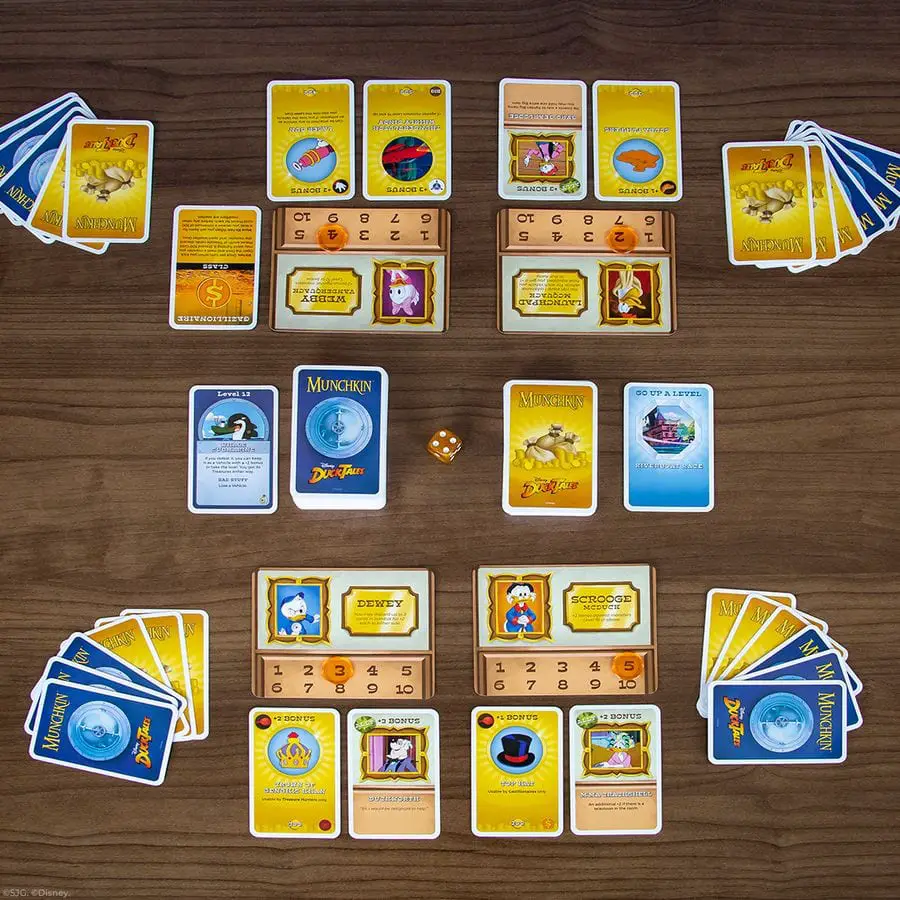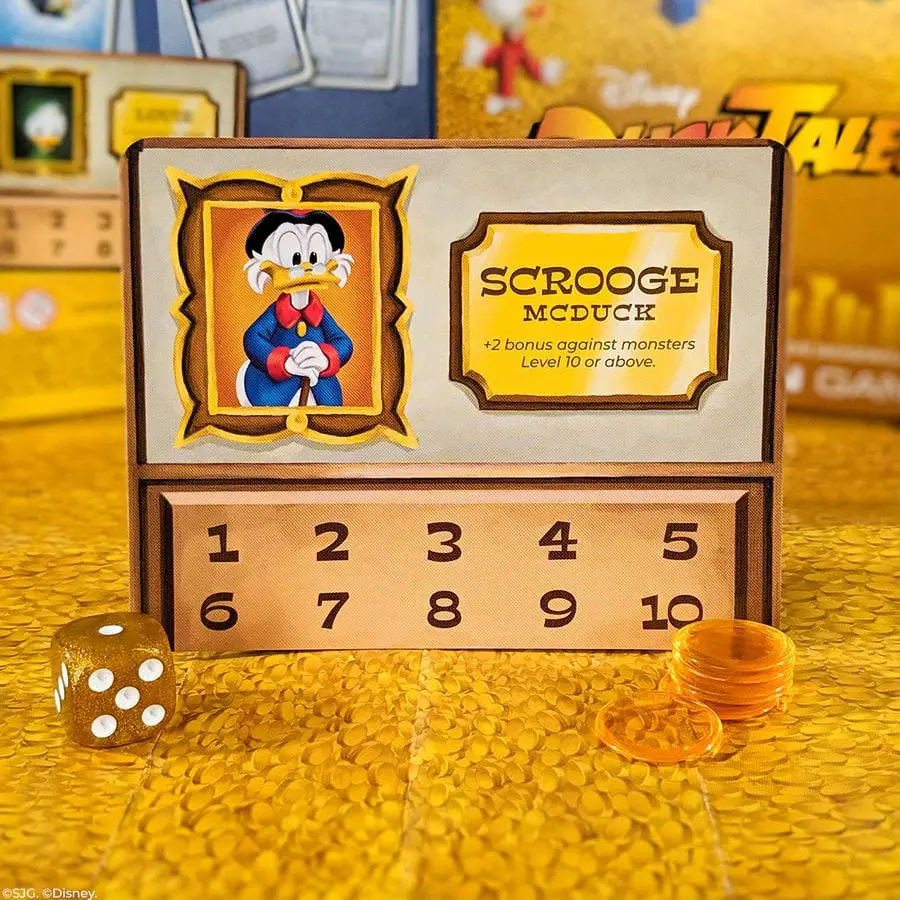Oh hey, it’s my first time reviewing a purely card-based game! That’s neat. Not remotely my first time reviewing a licensed game…in fact, I don’t think I’ve reviewed a single game that wasn’t based on some pre-existing IP. Interesting. Anyway, while I’ve never played Munchkin before, I am a big fan of both the tabletop RPGs that inspired it and of Disney’s Ducktales. So here I am!

It’s A Duck-Blur

The first thing we’ll need to discuss here is the presentation. I am a fan of all things Ducktales, so it’s not a problem for me, but it should be established up front that this game draws entirely and exclusively from the original cartoon, and not from the currently running reboot. I have mixed feelings about that (for one thing, it makes playing as Webby significantly less cool) as I am a rather firm fan of the new series, but the old one was by no means bad, and the art style was interesting enough to make each card distinct and nice to look at. In a nice touch, the die is sparkly and gold colored, and the plastic trackers aren’t sparkly but are still gold. Adds to the theming, which I appreciate.
No Junior Woodchuck Guidebook Needed

The gameplay is, in so far as I can tell, standard Munchkin fare, with the only unique elements being the (mostly cosmetic) character cards. Kinda disappointing that this is purely a cosmetic, but I suppose it makes sense to draw in those who might not have otherwise sprung for this game. For those who haven’t played a Munchkin game before, like me, I’ll break it down as briefly as I can. You’re given a character card (in this case there are ones representing Scrooge, Huey, Dewey, Louie, Webby, and Launchpad), which has a special bonus unique to the character for aiding them in gameplay, and the numbers one through ten beneath the portrait. You start by putting a marker on the One, indicating that your character is at level one, and the game will end when the first person gets their character to level ten.

There are three ways to gain a level in the game. One is to defeat a monster in combat (we’ll get to that), the second way is to get a card that says you gain a level, and the third is to sell Treasure cards, though you’ll need the coin value at the bottom of the cards you’re selling to add up to at least one thousand, so it’ll take some time. And since those items can also be used as combat helpers, and it’s impossible to avoid combat indefinitely in this game, you might wind up wishing you’d held onto them instead. Fortunately, while it is possible to lose levels due to card effects, you at the very least can’t go into the negatives. Level one is as low as you can go.
So, combat. At the beginning of each player’s turn, they draw a card from the top of the non item deck, the ‘Door’ deck. If the card is a monster, combat begins immediately. Combat is rather straightforward. You take your level, the level of the items you’ve equipped to your character, and, if you have one, you can add the level of an ally card to your total as well. If the total from this is higher than the level of the monster card, you win. Pretty easy, and relatively simple when compared to things like Magic The Gathering or even Yu-Gi-Oh. There are cards that can be used by other players to bolster monsters and impede your progress, or to add another monster to the fight, as well, adding a further layer to things. And sometimes, the ‘Door’ deck will give you Curse cards instead of monsters, which will impede you further. Most are immediate in effect, but others are Persistent, and will be hard to remove.
Is It Worthy Of The World’s Richest Duck?

And, well…yeah, that’s about it really. It’s a very straightforward and basic game, as are most card games without decks. You and your friends (anywhere from two to four other people) just go around in a loop nearly endlessly until somebody gets to level ten. There’s enough varieties of cards and potential strategies that, when combined with the personalities of the players involved, leave you with a game that has plenty of retail value, for all that it’s a pretty simple game.
Fans of Munchkin won’t find anything in here that’s different from other versions of the game aside from aesthetics, although everything in the game is compatible with other versions of Munchkin. Fans of Ducktales , however, will find an interesting and very well designed game, while casual fans of mid-strategy card games will find something charming, straightforward, and fun to play that doesn’t require any knowledge of the license (though if you haven’t seen DuckTales I don’t know what you’re doing wrong). I very much recommend this as a fun party game!
[rwp_box id=”0″]
You can pick up Munchkin: Disney Ducktales at Barnes & Noble as well as your FLGS, where it retails for $24.99
___________________________________________________
Images courtesy of USAopoly and Steve Jackson Games. A review copy of this game was provided by USAopoly.

